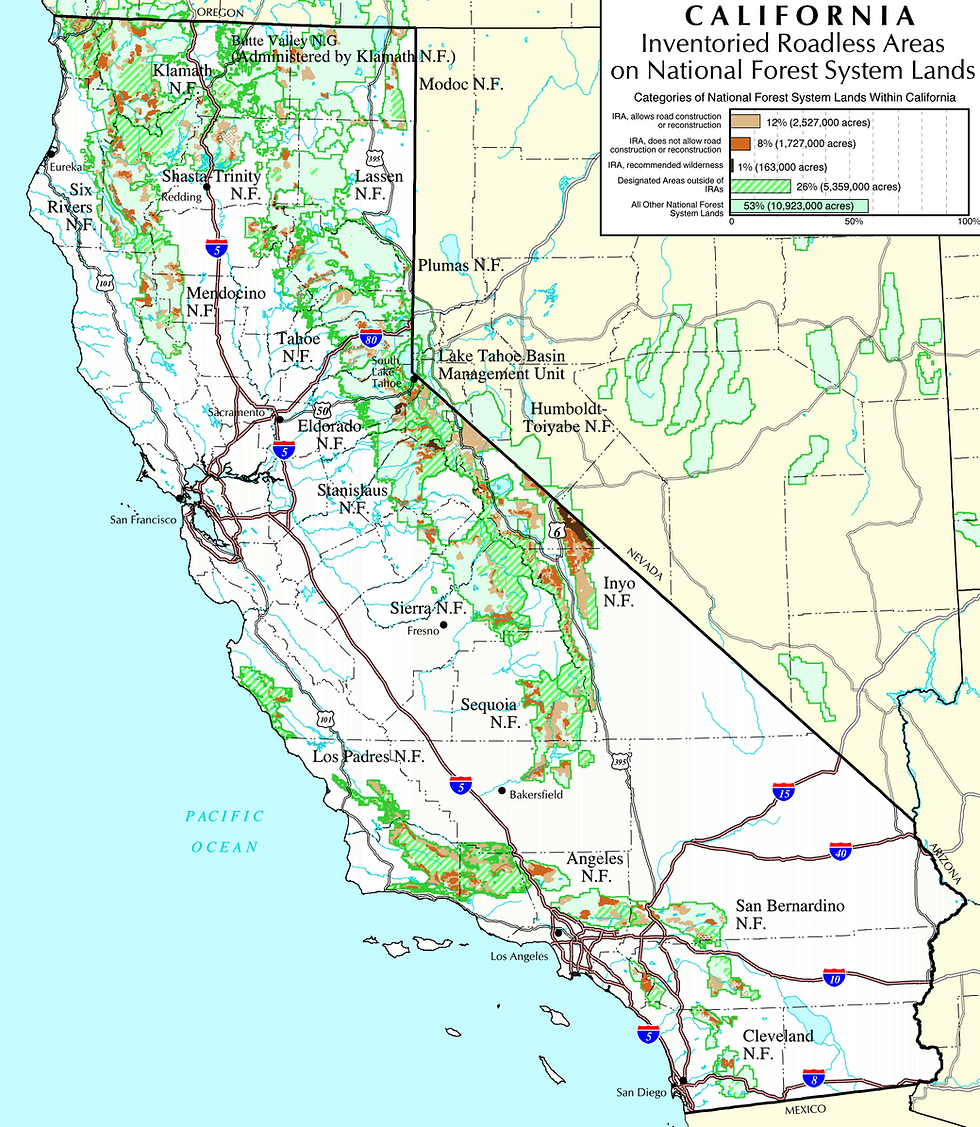California Department of Fish and Wildlife Gives Green Diamond a Free Pass
- Feb 3, 2014
- 4 min read

Green Diamond logging in Little River 2008
Green Diamond Northern Spotted Owl HCP Deemed “Consistent” with CESA
The California Department of Fish and Wildlife (CDFW) recently declared the Green Diamond Resource Company (GDRCo) federal Northern Spotted Owl (NSO) Habitat Conservation Plan (HCP) “consistent” with the provisions of the California Endangered Species Act (CESA). The issuance of a so-called “Consistency Determination” by the CDFW to GDRCo leaves the company in the cat-bird seat in terms of CESA compliance when compared to other timber companies.
California Fish and Game Code section 2080.1 allows for private landowners who have already obtained federal HCPs and associated Incidental “Take” Permits (ITPs) to apply for Consistency Determinations with the CDFW for their otherwise lawful activities. Despite the fact that the statue characterizes the process of obtaining a Consistency Determination as an “application,” California state courts have ruled that issuance of these determinations does not constitute a “discretionary” project, and therefore are not subject to fully review under the California Environmental Quality Act (CEQA). This means that there is no opportunity for the public to review or comment on the Consistency Determination application, and that there is no recourse for the public to challenge the issuance of these determinations, either administratively or legally.
The CDFW has found the GDRCo HCP for NSO consistent with CESA despite the fact that standards for achievement of incidental “take” under the federal Act and state Act are quite different. The federal ESA in section 10(a)(2)(B) of the Act provides that any “take” of listed species pursuant to a federal ITP “will, to the maximum extent practicable, minimize and mitigate the impacts of any such taking.” CESA, meanwhile, in section 2081(b)(2) of the California Fish and Game Code provides that the impacts of any “take” be minimized and “fully mitigated.” A correct application of the “fully mitigated” standard under CESA would provide for a higher bar for the achievement of an ITP under the state Act.
The GDRCo NSO HCP, issued in 1992, is based on the premise that “take” will occur as a result of both direct and indirect displacement of NSO, at a rate of approximately 3 pairs per-year for direct displacement, and 2 pairs per-year due to indirect displacement. Such “take” was intended to be minimized by the implementation of certain precautionary measures, and by the creation of “set-asides,” where no harvest would be allowed.
There are two basic fundamental premises underpinning the GDRCo NSO HCP. These are 1) NSO habitat will increase over the life of the permit, and that harvest rates will not proportionally exceed such increased habitat growth, and 2) NSOs displaced by timber harvest activities would be replaced on the landscape as new habitat comes on line and new sites are established.
However, GDRCo’s own 20th annual report to the U.S. Fish and Wildlife Service (USFWS) notes that approximately 55 owls have gone “missing” in recent years. Further, as indicated by Forsman et al. 2011, apparent survival rates for NSO on GDRCo lands is showing a continuous decline. Finally, GDRCo’s own report to the USFWS admits that the fundamental premise that owl sites lost to timber harvest would be replaced has borne out to be false: “The fundamental premise of the spotted owl HCP is that sites lost through timber harvest will be replaced in other areas as stands become mature and suitable for occupancy by owls. However, newly colonized sites have not offset the number of net displacements and other abandoned sites” (GDRCo 2012).
Clearly, despite the basic premises of the GDRCo HCP, the company’s activities pursuant to this permit have not “fully mitigated” the effects of “take” on NSO populations on its lands. This runs contrary to the intent of CESA, and leaves substantial questions as to the approach of the CDFW in reviewing Consistency Determinations and ITPs.
Meanwhile, Humboldt Redwood Company (HRC) also holds a federal HCP and associated ITP for NSO. Unlike the case of GDRCo, HRC will be required to augment its HCP in order for it to be deemed “consistent” with CESA. HRC lands, like GDRCo lands, has shown a consistently low reproductive rate for NSO over the last several years, thus triggering re-consultation with the federal and state wildlife agencies over its 1999 federal HCP.
GDRCo continues to maintain that NSO populations are either stable or increasing on its lands, despite low apparent survival rates, low reproductive rates, lack of recruitment of new sites to offset lost sites, and the slow growth of new suitable habitat for the species. Issuance of a Consistency Determination for the GDRCo federal NSO HCP by the CDFW virtually ensures that these alarming trends will continue, and raises serious questions about public notification, process, and involvement in the issuance of these determinations. It also raises further questions about the integrity of the GDRCo’s certification as a “sustainable” forestry operation by the Forest Stewardship Council (FSC), as a significant portion of the FSC certification award was based upon the Green Diamond HCP.
EPIC is dedicated to the conservation of the Northern Spotted Owl across the landscape in Northwestern California. The precipitous decline of this iconic species due to a broad range of threats is indicative of a much larger ecosystem failure, and sounds the alarm for us all to consider.
For more information see





Comments